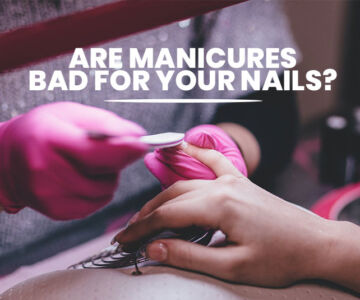 Niche Hobbies: Bonsai, Terrariums, Aquascaping Delightsby admin / February 28, 2024
Niche Hobbies: Bonsai, Terrariums, Aquascaping Delightsby admin / February 28, 2024Inclusive Beauty Brands: Redefining Beauty Standards
Inclusive Beauty Brands in the Beauty Industry
A revolutionary wave is changing the beauty industry, which has traditionally had exclusive and unreachable beauty standards. Imagine a society where all individuals experience a sense of acceptance and joy, irrespective of their age, race, gender, or outward seem. This is the idea behind a new wave of beauty firms that put diversity and inclusivity at the forefront of their advertising and product lines.
Breaking the Mold: Stats That Speak Volumes
Before delving into the unexplored realm of inclusive beauty, let’s highlight a few noteworthy figures that are frequently obscured by glossy marketing narratives:
- A Nielsen survey claims that inclusive and diverse beauty brands are expanding 1.5 times faster than those that do not place a high priority on diversity.
- According to a McKinsey & Company poll, 62% of buyers of cosmetic products between the ages of 18 and 34 actively look for firms that showcase diversity in their advertising.
The Beauty Conversation for Everyone
Various perspectives are frequently left out of the conversation about beauty standards, but inclusive beauty businesses are changing the narrative. It’s about democratizing the discourse, not only about the redefinition of beauty. An invitation to participate in a conversation that honors individuality and inclusivity knows no bounds regarding age, gender, or ethnicity.
The difficulty, though, is in getting over deeply rooted prejudices and stereotypes. For a long time, society has upheld certain beauty standards that have silenced opposing viewpoints. It will need consistent work to question accepted wisdom and promote a more inclusive definition of beauty to break these stereotypes.
A Beauty Palette for Every Story
Inclusive beauty brands recognize that many different stories make up beauty, each with its unique tints and hues, rather than just one. These companies provide stories that connect with consumers on a personal level in addition to selling goods. It’s about empowerment and self-expression, not just cosmetics.
However, to ensure authentic depiction, creating a beauty palette for each story presents difficulties. The industry has to struggle to embrace the vast diversity of narratives and avoid tokenism. Authenticity becomes critical, and companies must walk a tightrope between using diversity as a marketing tactic and genuinely valuing varied narratives.
Body Positivity and Diversity in Beauty:
Ninety-one percent of customers feel that firms should include more diversity in their advertising, according to a Beautycon Media survey. A movement supported by companies dedicated to highlighting the beauty of diverse body kinds, skin tones, and identities has emerged in response to this demand for inclusivity. Fenty Beauty, which Rihanna launched in 2017, is one such company that is creating waves in this market.
Along with its superior goods, Fenty Beauty gained notoriety for its innovative approach to inclusion. Fenty Beauty upended the convention in the business by providing an amazing assortment of foundation shades that accommodate a wide range of skin tones. By doing this, the business offered a message of acceptance and representation in addition to makeup.
Changing Beauty Standards, One Shade at a Time:
For a long time, the beauty industry has promoted limited notions of beauty that prioritize qualities that are specific to Europe. Still, things are starting to change. According to a Nielsen survey, companies that prioritize diversity and inclusion are surpassing their competitors. Sales of products that promoted themselves as inclusive and diverse increased by 6.3% in 2019 compared to a 1.3% fall for those that did not.
This change is not limited to the cosmetics section. Advertisers for haircare products like Pantene and SheaMoisture have embraced the need for inclusion by showcasing a range of hair textures. Diversity is important, and the beauty businesses at the forefront of this movement are demonstrating that by embracing a broader notion of beauty, they can reach a wider range of consumers.
Empowering Through Representation:
Not only are inclusive beauty brands altering the way products are advertised, but they are also actively transforming how society views beauty. Consider the lingerie and loungewear brand Aerie’s #AerieREAL campaign. Body positivity has been spearheaded by Aerie, who promised not to Photoshop their models.
Such efforts have an impact that extends beyond the business world. Consumers who are exposed to diverse representations in advertising may have higher levels of body satisfaction and a more positive body image, according to a study published in the Journal of Consumer Research. This emphasizes how inclusive beauty companies may help people feel empowered and like they belong.
Conclusion:
Inclusive beauty brands are shining lights of change in an era that celebrates individuality and redefines beauty. Data and statistics support the growing customer preference for inclusive brands by demonstrating the need for diversity and representation in the marketplace.
Although there is still work to be done to redefine beauty standards, we are getting closer to having a beauty industry that accurately represents the diversity of the world we live in with every new shade range, unretouched photo, and campaign that highlights individuality. These inclusive beauty products tell tales that go beyond cosmetics and skincare; they are stories of acceptance, empowerment, and the appreciation of each person’s beauty.



